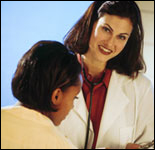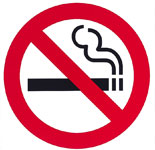Cancer Prevention Starts in Childhood
 Reduce your children's risk of getting many types of cancer later in life. Start by helping them adopt a healthy lifestyle with good eating habits and plenty of exercise to keep a healthy weight. Then follow the tips below to help prevent specific types of cancer.
Reduce your children's risk of getting many types of cancer later in life. Start by helping them adopt a healthy lifestyle with good eating habits and plenty of exercise to keep a healthy weight. Then follow the tips below to help prevent specific types of cancer.
Sun Safety: The Key to Skin Cancer Prevention
 Most skin cancers can be prevented if children and teens (and adults, too) are protected from ultraviolet (UV) rays.
Most skin cancers can be prevented if children and teens (and adults, too) are protected from ultraviolet (UV) rays.
Just a few serious sunburns can increase your child's risk of skin cancer later in life. Kids don't have to be at the beach to get too much sun. Their skin needs protection from the sun's harmful UV rays whenever they're outdoors.
To protect yourself and your family—
- Seek shade, especially during midday hours.
- Cover up with clothing to protect exposed skin.
- Wear a hat with a wide brim to shade the face, head, ears, and neck.
- Wear sunglasses that wrap around and block as close to 100% of both UVA and UVB rays as possible.
- Put on sunscreen with sun protective factor (SPF) 15 or higher, and both UVA and UVB protection.
The UV rays from tanning beds and sunlamps are as dangerous as the UV rays from the sun. Don't let your children or teens use them. Many states restrict the use of tanning beds by children and teens.
A Vaccine to Prevent Cervical Cancer
 Human papillomavirus (HPV), a common virus that can be passed from one person to another during sex, is the main cause of cervical cancer. The same virus also is linked with many vaginal, vulvar, penile, anal, and oropharyngeal cancers.
Human papillomavirus (HPV), a common virus that can be passed from one person to another during sex, is the main cause of cervical cancer. The same virus also is linked with many vaginal, vulvar, penile, anal, and oropharyngeal cancers.
A vaccine to prevent HPV infections is available. It protects against the types of HPV that most often cause cancer. The vaccine is given in a series of three shots and is recommended routinely for 11- and 12-year-old girls and boys. The vaccine also is recommended for girls and women aged 13 through 26 years and boys and men aged 13 through 21 years who did not get any or all of the shots before. The vaccine can be given beginning at age 9.
Major Causes of Lung Cancer
 Smoking. Tobacco use is the major cause of lung cancer in the United States. The best way to prevent lung cancer is by never starting to smoke, or quitting if you do smoke. It is important to prevent adolescents from starting to smoke.
Smoking. Tobacco use is the major cause of lung cancer in the United States. The best way to prevent lung cancer is by never starting to smoke, or quitting if you do smoke. It is important to prevent adolescents from starting to smoke.
In 2011, 44.7% of high school students reported that they had at least tried smoking. One in five high school students was a current smoker.
Talk to your children about why you don't want them to smoke.
Secondhand smoke. Smoke from other people's cigarettes ("secondhand" smoke) can cause lung cancer. There is no safe level of secondhand smoke for nonsmokers. Don't expose your children to secondhand tobacco smoke.
In your own home, establish a smoke-free policy.
More Information
- Cancer Prevention
- Protecting Children from the Sun
- Skin Cancer Prevention
- HPV-Associated Cancers
- Questions & Answers for Parents of Pre-teens and Teens about HPV and the HPV Vaccine [PDF-1.2MB]
- Give Your Child a Smoke-Free Childhood
- Quit Smoking
- Listen to a Podcast
- Send an eCard
CDC works 24/7 saving lives and protecting people from health threats to have a more secure nation. A US federal agency, CDC helps make the healthy choice the easy choice by putting science and prevention into action. CDC works to help people live longer, healthier and more productive lives.
Get email updates
To receive email updates about this page, enter your email address:
Contact Us:
- Centers for Disease Control and Prevention
1600 Clifton Rd
Atlanta, GA 30333 - 800-CDC-INFO
(800-232-4636)
TTY: (888) 232-6348 - Contact CDC-INFO






